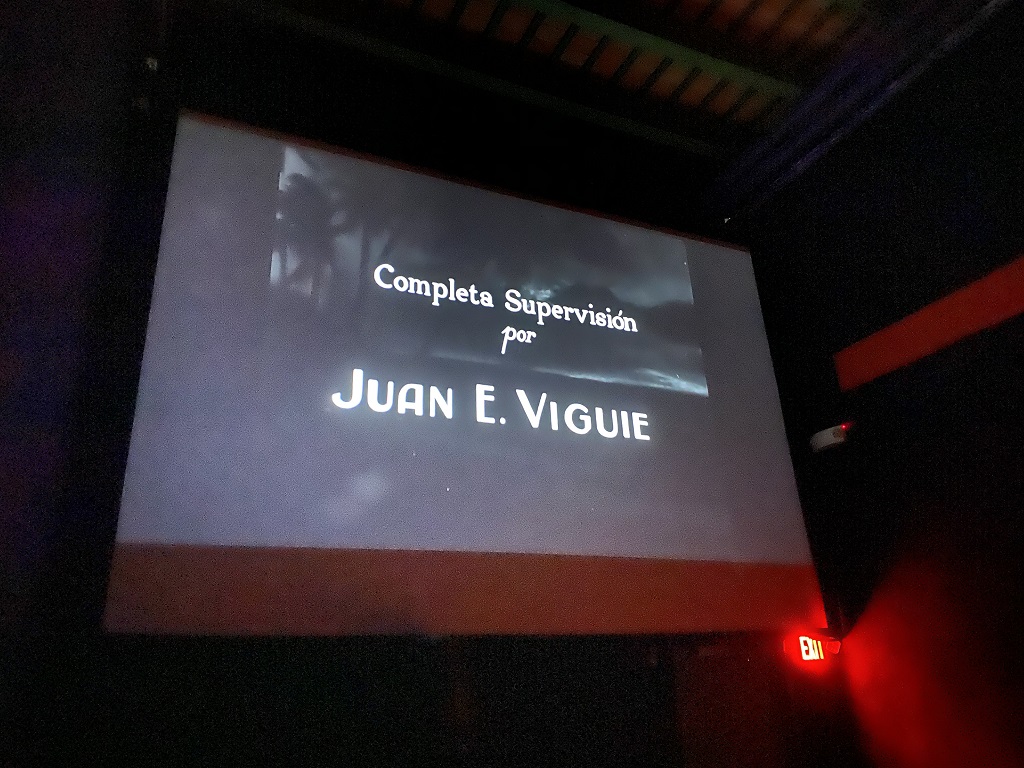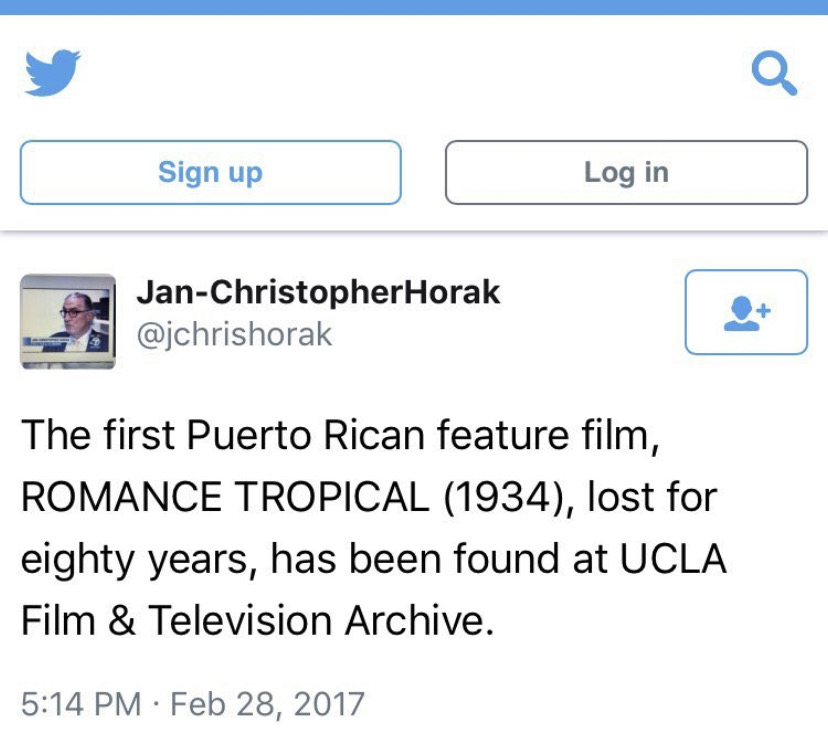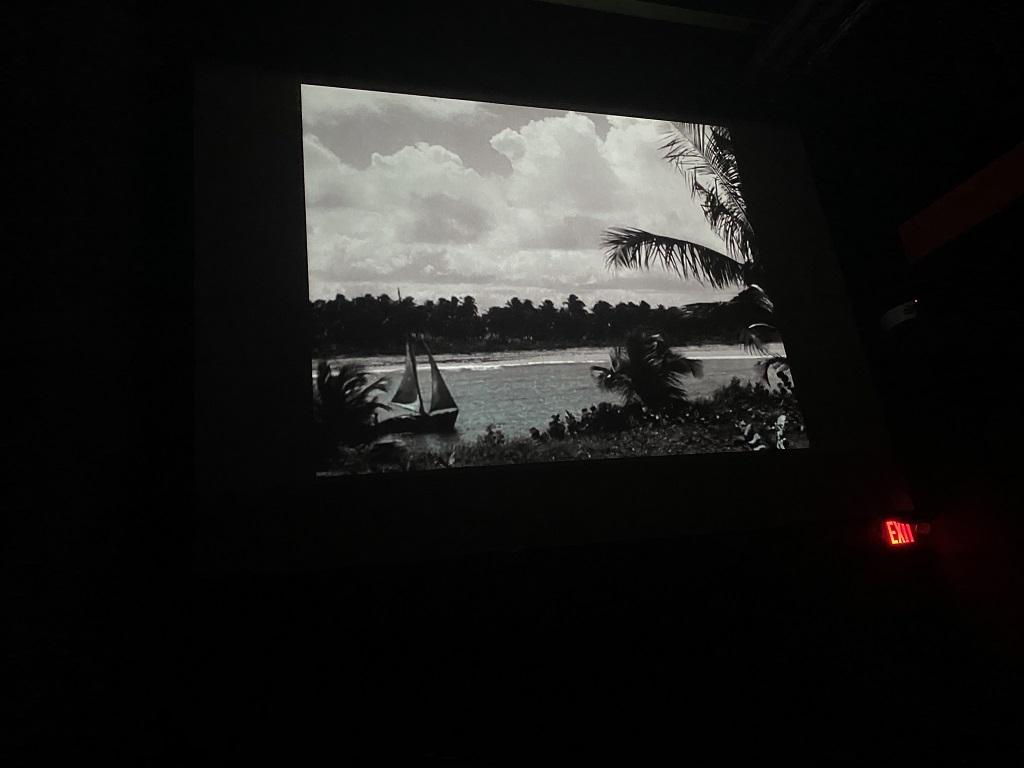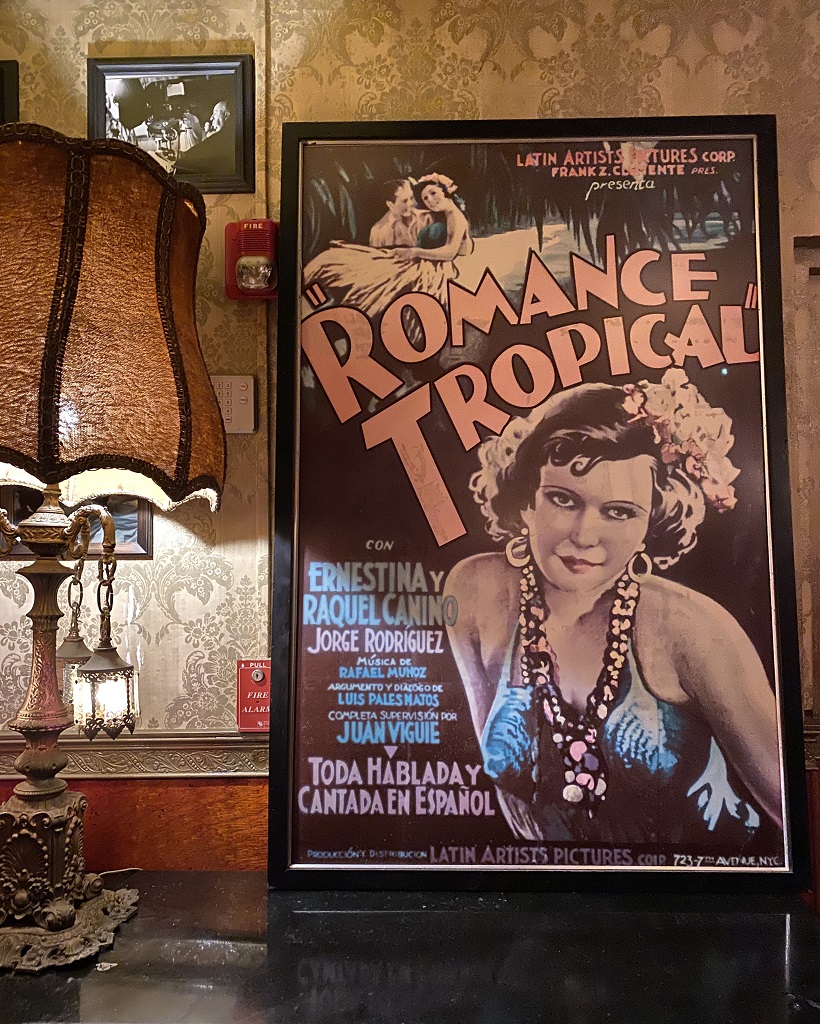Cinematic History was made on September 24, 2020 at Cinema Bar, in San Juan, Puerto Rico. The second film with Spanish audio in the world, was displayed on the big screen for the first time in Puerto Rico ever since its premiere, and disappearance eighty-six years ago, in 1934. The film, Romance Tropical, was filmed in Puerto Rico, written by Luis Pales Matos (famous Puerto Rican poet), its music was created by Rafael Muñoz (well-known Puerto Rican big band director), moreover, it was directed and produced by Juan Emilio Viguié Cajas (pioneer in the Puerto Rican film industry).
“The unexpected appearance of Romance Tropical, can be described as none other than miraculous,” said Stephanie Viguié (great-granddaughter of Juan Emilio Viguié Cajas). The film, Romance Tropical, has always been known as an extraordinary movie that reached the Hollywood standards of the time. Thanks to the Viguié legacy, it’s easy to understand how even after it being lost for over eighty years, we never forgot its history. Not to mention the fact that it continues to be a great accomplishment in the cinematic history of Puerto Rico and the world.
Other than its beautiful music and poetic script; what makes Romance Tropical an extraordinary film? In 1930’s Hollywood, movies with audio were filmed in soundproof studios. Filming outside was very complicated as the sound equipment of the time was huge, delicate and very difficult to transport.
This historic movie was filmed mostly outside, with many scenes in windy beaches. Hollywood experts have not been able to determine which sound equipment Viguié Cajas used, and they theorize he combined several experimental technologies of the time to achieve the impeccable sound we can still enjoy today. Also, seeing as there were no water proof cameras at the time, Viguié Cajas created a contraption that allowed him to simulate scenes being filmed in the water and simultaneously protect the camera. In addition, to arrive at the location the movie was filmed in, the crew had to travel through a road of sand and no pavement with all of the production equipment. It is clear that its passionate director wanted to make this film one of a kind.

Juan Emilio Viguié Cajas oversaw all production aspects of the film. In 1934, the closest film developing laboratory was in New York City, it is for this reason that he decided to develop the film in his tiny self-made studio in Puerto Rico. He wanted to make sure he had all the scenes before setting off on his four-day journey to New York. After post-production, Juan Viguié decided to premiere the film in the legendary Campoamor Theater. It is documented that the queues to watch the film were never-ending, in fact, they had to add showing times. Imagine living in New York in the 1930’s and watching a film in Spanish. The success was so notable, MGM decided to distribute the movie worldwide. They gave Viguié Cajas a contract for four additional films, and even offered to move their production offices for the Hispanic market to Puerto Rico, as long as Viguié Cajas was involved. However, Romance Tropical was never distributed worldwide. After its premiere in New York, the film disappeared.
The current generation of the Viguié family had heard of the famous film, yet none of them had seen it. “We always thought nobody would ever see it again,” said Stephanie Viguié. After the devastation of Hurricane Maria in 2017, the Viguié family found hope in the work of their ancestors. According to John E. Viguié (grandson of Juan Emilio Viguié Cajas), it all started with a Tweet.

After making contact with UCLA, the Viguié family had the opportunity of witnessing their legacy for the very first time. Thanks to a private link, the privilege of a generator and fickle Wi-fi, John and Stephanie sat down to anxiously watch Romance Tropical. As the movie started, they hoped it was more than just the second film with audio in Spanish, in the world. They wanted it reached the 1930’s Hollywood level. Stephanie Viguié was proud to share that it surpassed all of their expectations. Within watching the first three minutes of the film, they knew they were witnessing a work of art. The excitement was so much it motivated the entire Viguié family to move to Los Angeles, California and gather all of the information on the film. Fast-forward three years in the future and Viguié family has discovered why Viguié Cajas decided to retire the film and never create feature films again. Stephanie Viguié shares that there are many reasons and they are full of intrigue, jealousy, family conflicts and even political and religious interventions. Coming Soon to a Streaming Service near you; TheRaccoonteurs.com will bring you, “Somewhere in the Nowhere”, a television series that will honor the Viguié family history and the history of Hispanic Cinema which are one and the same.


